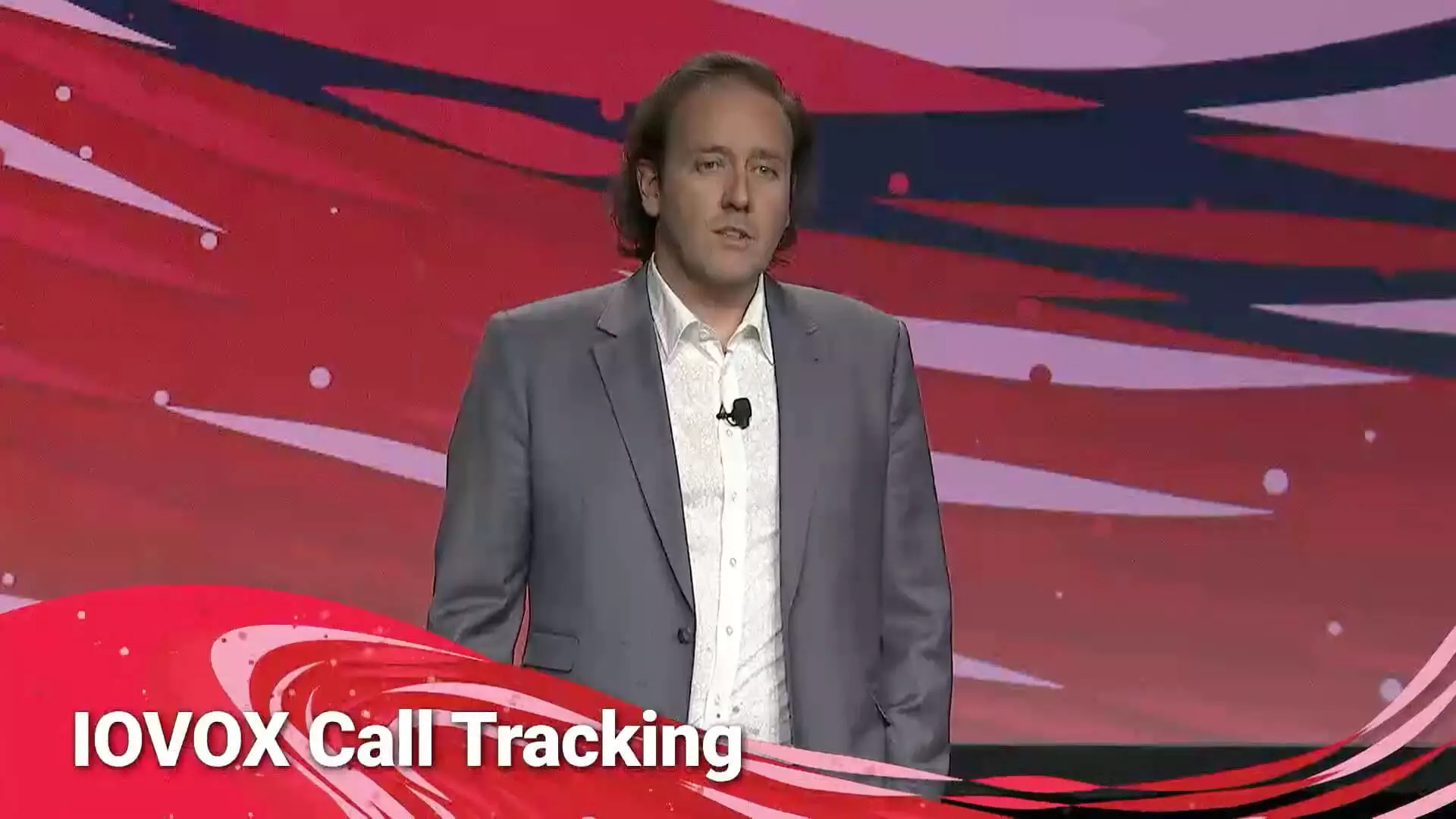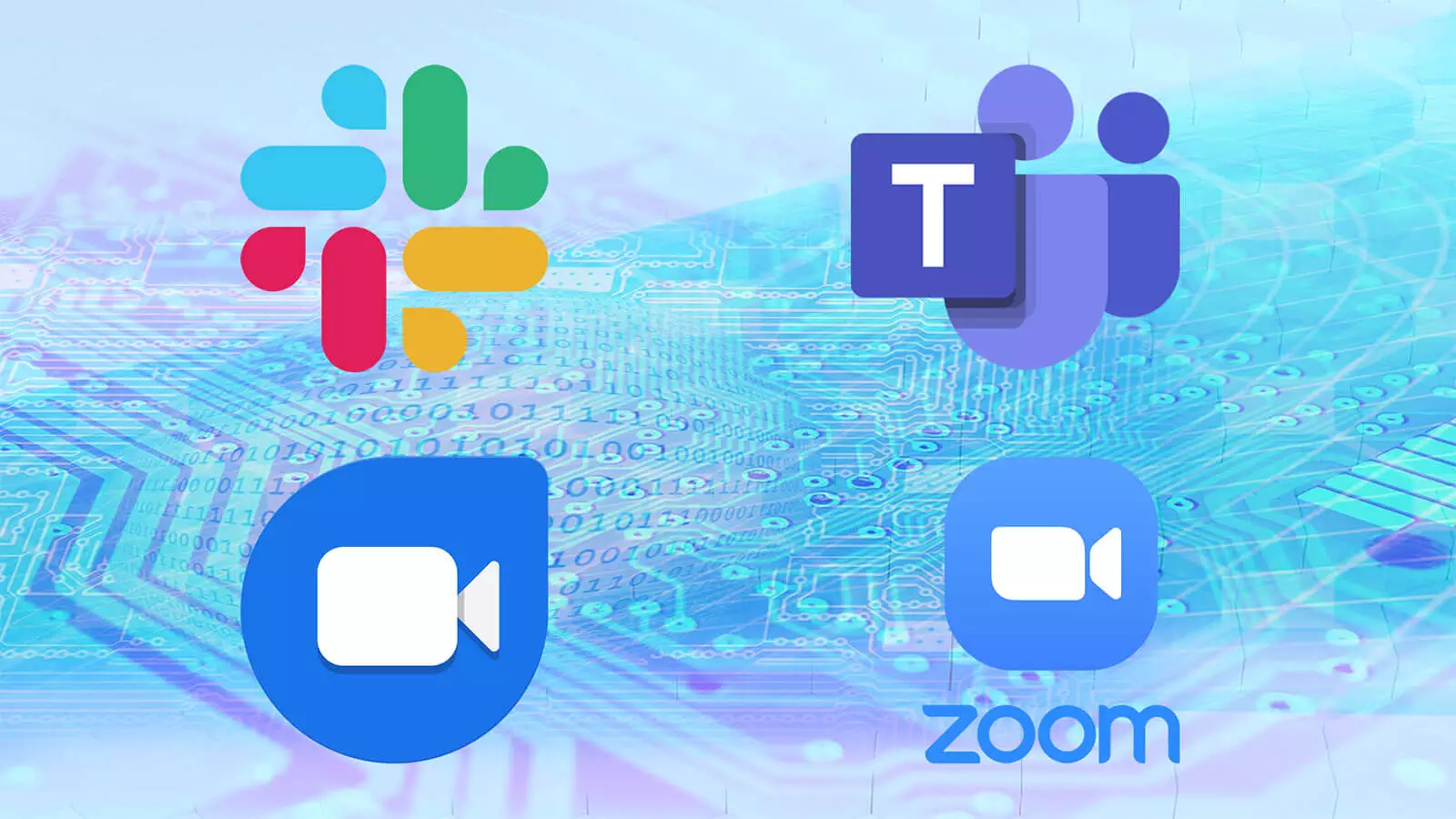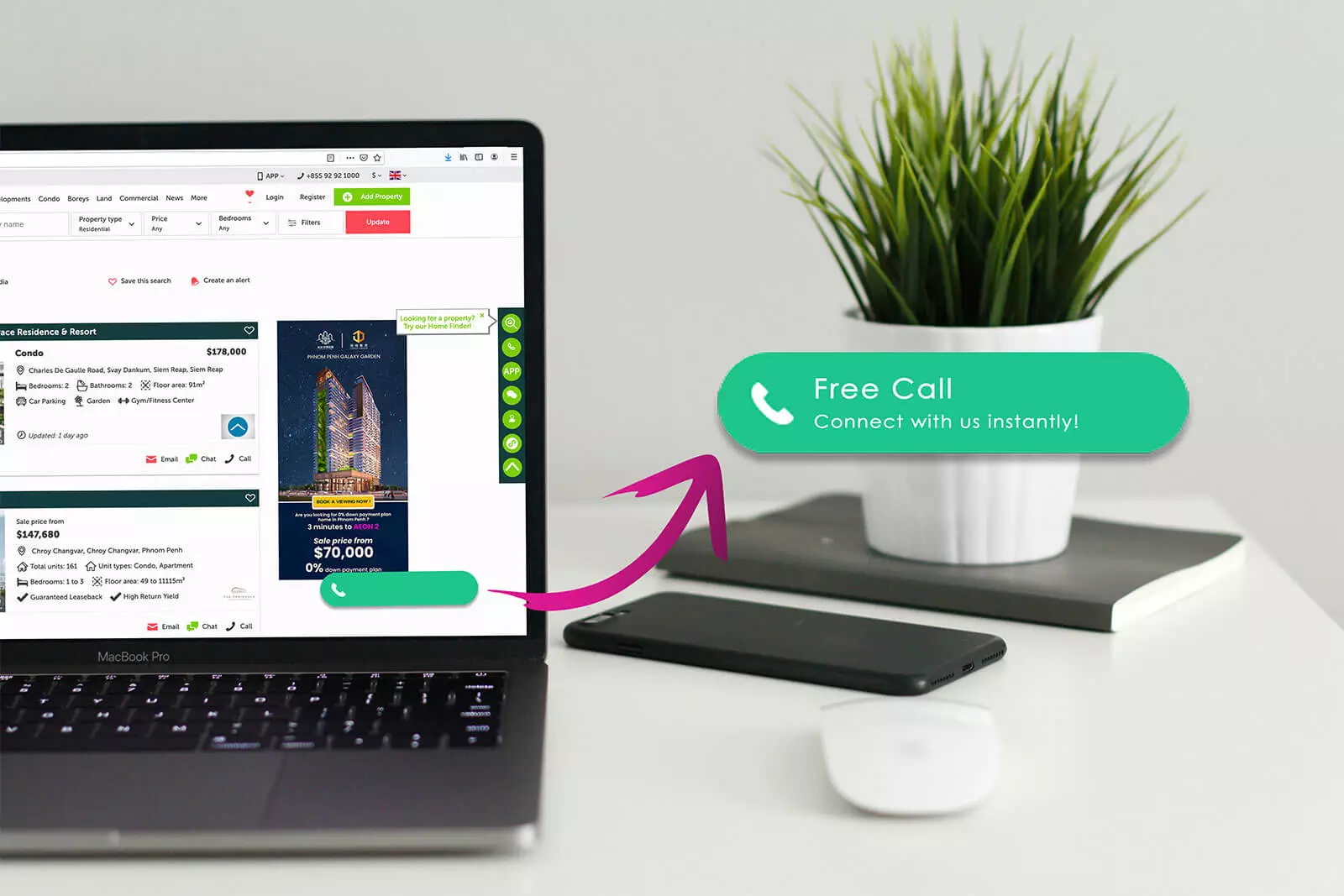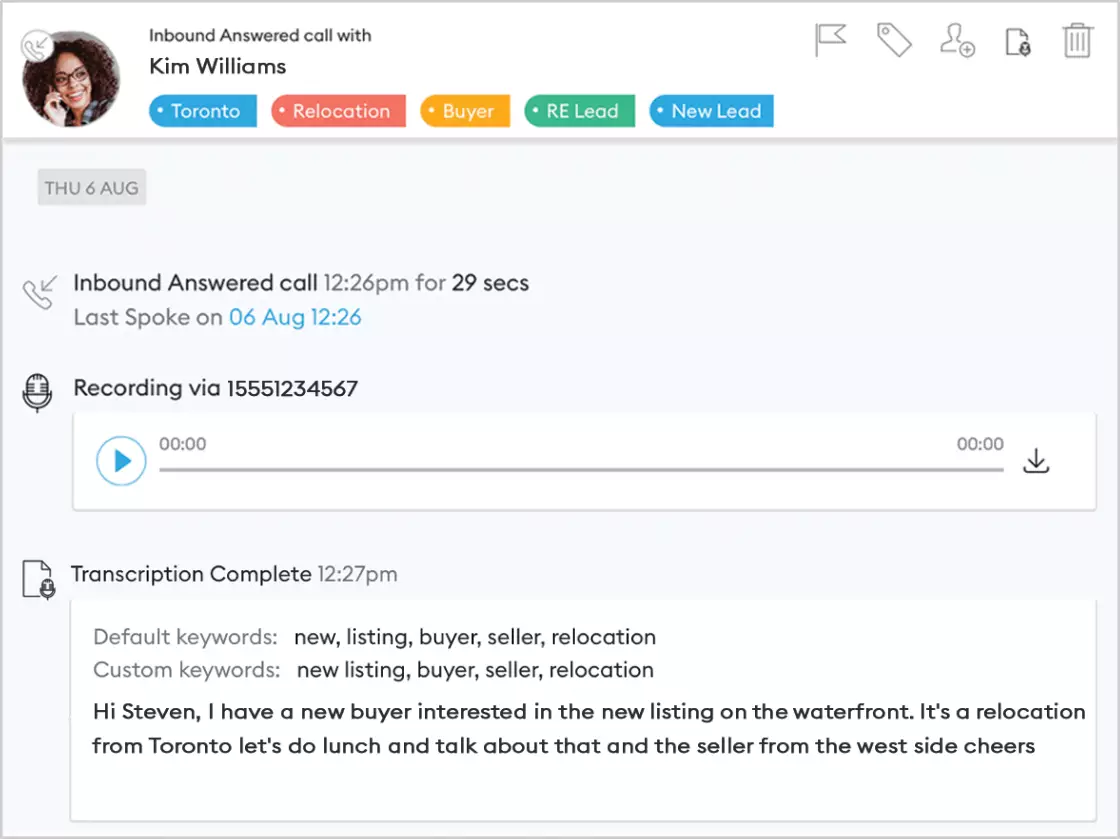New Insider Interview – Is It the Beginning of the End of Telephone Numbers In the World?
call tracking, interview, webconnect, marketing, speech analytics, conversational ai, iovox insights,
For insights on trends shaping the telecommunications and call tracking industry in the new year, we sat down for a virtual one-on-one with iovox co-founder and CEO, Ryan Gallagher. Did 2020 mark the beginning of the end for phone numbers? Read this article for Ryan’s insights and revealing perspectives on trends he sees reshaping telecommunications and the call tracking industry as a whole.
Q: Ryan, how would you characterize this unprecedented year we just completed?
A: Well, ‘unprecedented’ is a good starting point, crazy is more like it! Obviously 2020 was unlike any year we have ever seen before. Looking back, on a personal level, I’m incredibly proud of how our team navigated the uncertainty and that we were able to keep our staff together. With a global team in multiple time zones, our employees did a great job of staying connected and looking after one another which allowed us to do a better job of looking after our customers. Our business proved to be quite resilient and we learned a lot about ourselves and the industry in 2020.
 Ryan Gallagher, CEO, iovox
Ryan Gallagher, CEO, iovox
Q: What did you learn in 2020?
A: Without a doubt, the pandemic accelerated the rate of adoption for non-telephone number-based phone calls. As an example, at iovox we use Microsoft Teams as our primary collaboration tool. Rarely do we have a conference call internally or with customers, where we dial a telephone number. We press a button and connect to a virtual conferencing space. We do the same thing when calling each other one-on-one. These tools have been around for a long time, but the big difference now is the comfort level of using this technology. It would be hard to find someone today that hasn’t spent hours on Zoom, Teams, Google, Slack or any number of virtual conferencing tools and we believe this uptick in non-telephone number-based calling will have a major impact on the call tracking industry.

Q: How does the adoption of tools like Teams and Zoom impact call tracking?
A: If you think about it, as a global society, from grade school children all the way up to grandparents, we’ve all become comfortable making calls without dialing digits. Many of us would prefer to tap a button and be connected rather than punch in digits, which is what we have all grown accustomed to in the era of the smartphone. Gone are the days of remembering someone’s phone number, now we just tap their name. So why should we have to call a business from a phone number displayed on screen? If you’re a business and someone is visiting your website, why shouldn’t the visitor just be able to click or tap a button and make a call from their mobile phone, tablet or laptop? Of course, they can always dial the number too, but the mindset of calling without dialing digits is here to stay. This is absolutely transformative and is changing how we communicate, but the technology is not entirely new.
Q: What do you mean the technology is ‘not entirely new’?
A: I remember being on a panel about 10 years ago when people we’re talking about the ‘death of the phone number’. The vision at the time was that we’d no longer rely on telephone numbers to route calls, but we might rely on things like email addresses to route voice traffic or we’d be using tools like WebRTC for point-to-point communications whether through chat, voice, or video. These tools have existed for years, but the difference is that in 2020, we’ve all become more comfortable using them, and that opens up a ton of opportunity for iovox.
Q: What kind of opportunities do you foresee as a result of the worldwide adoption of non-telephone number-based calling?
A: Our new WebConnect solution is definitely one of them. In reality the phone number may never go away entirely, but in certain industries where companies are looking to increase leads and create immediate connections with their customers, putting a button on your website to enable instant calls is an easy way to open yourself up to more engagement with customers. Not only that, but the attribution and analytics from web-based calls is 100% accurate. The current method that most call tracking companies use to get deeper data on what drove the call is by using dynamic number insertion, or DNI. The problem with DNI is that it is not 100% accurate. By trying to match a digital session with a traditional phone call, we lose accuracy, and as a result, impact. When the session of a website visit is combined with a website originated phone call, the data becomes extremely powerful and actionable. We’re seeing more and more customers who are looking for data well beyond, ‘did the phone ring’ and ‘where did the lead come from’ and this solution helps us provide so much more with absolute confidence in the data.

Q: Where do you see the trend going related to data tracking beyond counting calls and marketing attribution?
A: Let’s use broadband as an example. As broadband speeds increased and costs decreased, the universe of new applications exploded. Today, we’ve completely transformed industries like entertainment due to broadband. Yes, other factors are involved, but broadband is at the heart of that industry transformation towards streaming. Now apply that same concept to what’s happening with speech recognition, voice inputs like Alexa, and automated transcription. As that technology continues to improve, and costs come down, the number of business uses for voice-based data will also explode.
Q: How do you see speech analytics evolving?
A: We’re already seeing much more interest in our iovox Insights product where customers are looking for “Conversational Intelligence” which means they want to know more about the nature of the call, was it handled in a manner that is consistent with their quality standards, did the person on the call treat the customer respectfully, and so on. These advanced speech analytics tools used to be reserved for big companies with big budgets, but that’s no longer the case. As I mentioned, as costs come down and the technology gets better, services like this will only increase in usage because of the value in being able to search voice conversations similar to how we search email today. Voice is data.

Q: Back to the phone number, do you think we’re at the point where we no longer need them?
A: In reality, there are some very large companies and governments that have a vested interest in the status quo when it comes to the routing of phone calls, so, no, I don’t think we can simply eliminate the use of phone numbers. That said, technically, we live in an Internet-based world and the routing of calls can be handled by other addressing schemes, even something as simple as an email address if we had a commitment to global standards. Maybe we’ll get there someday but given the size of the industry and the strong economic interests tied to the status quo, it will likely be a long time before phone numbers completely go away, but 2020 will definitely be remembered as a transformative year that fast tracked the change in mindset around how phone calls are made.
Q: Ryan, thanks for your time. As we wrap up, any final comments?
A: We’re taking the ‘silver lining’ approach to 2020 and there were certainly some bright spots that we believe will have a lasting, positive impact on our industry. In times of adversity, there are opportunities for innovation, and we are proud that in the past year we did exactly that, improving our platform and adding new in-demand functionality that puts us well ahead of the competition. We’re excited by these developments and embrace the changes that come with it.
If you’d like to speak to someone on our team, click the green button at the bottom of your screen and give us a call.
You can also email us at hello@iovox.com or give us a call toll-free from within the US at +1 888 369 9519.
From outside the US please reach us at one of these numbers:
Las Vegas, USA +1 702 425 7505
London, UK +44 (0)20 7099 1070
Sydney, Australia +61 (0)2 8520 3530
Paris, France +33 (0)1 84 88 46 40